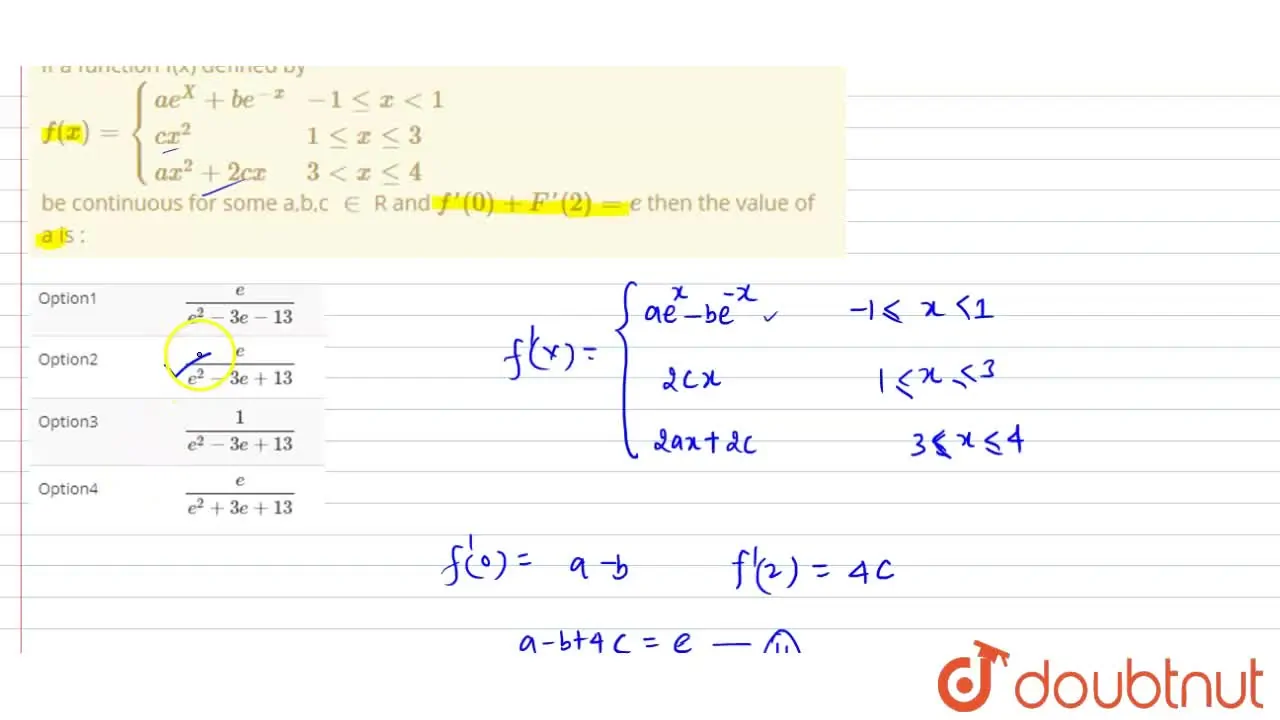If a function f(x) defined by
f(x)=⎧⎪⎨⎪⎩aeX+be−x−1≤x<1cx21≤x≤3ax2+2cx3<x≤4
be continuous for some a,b,c ∈ R and f'(0)+F'(2)=e then the value of a is :
ee2−3e−13
ee2−3e+13
1e2−3e+13
ee2+3e+13
Step by step video & image solution for If a function f(x) defined by f(x) ={{:(ae^(X) + be ^(-x ) , -1le x lt 1),( cx^2 , 1 le x le 3),( ax ^2 + 2cx , 3 lt x le 4):} be continuous for some a,b,c in R and f'(0) +F'(2) = e then the value of a is : by Maths experts to help you in doubts & scoring excellent marks in Class 12 exams.
Related Playlists
Similar Questions
If f(x)={3x2+12x−1,−1≤x≤237−x,2<x≤3,then
View SolutionIf a function f(x) is defined as f(x)=⎧⎪⎨⎪⎩−x,x<0x2,0≤x≤1x2−x+1,x>1 then
View SolutionIf f(x)={3x2+12x−1,−1≤x≤237−x,2<x≤3,then
View SolutionIf f(x) =x2+ax+b, if 0≤x<2=3x+2, if 2≤x≤4=2ax+5b, if 4<x≤8 is continuous on [0,8] then a−b=……
View SolutionIf f(x)={x2+10≤x<1−3x+51≤x≤2
View SolutionIf f(x)=⎧⎪⎨⎪⎩x2−4, for 0≤x≤22x+3, for 2<x≤4x2−5, for 4<x≤6, then
View SolutionLet f(x) = ⎧⎪⎨⎪⎩x3+x2−10x−1≤x<0sinx0≤x<x/21+cosxπ/2≤x≤x then f(x) has
View SolutionIf f(x)=⎧⎨⎩x220≤x<12x2−3x+321≤x≤2 then,
View SolutionLet a function f(x) defined on [3,6] be given by f(x)={loge[x]3≤x<5|logex|5≤x<6 then f(x) is
View SolutionIf f(x) =−x2, if x≤0=5x−4, if 0<x≤1=4x2−3x, if 1<x≤2 then f is
View Solution


